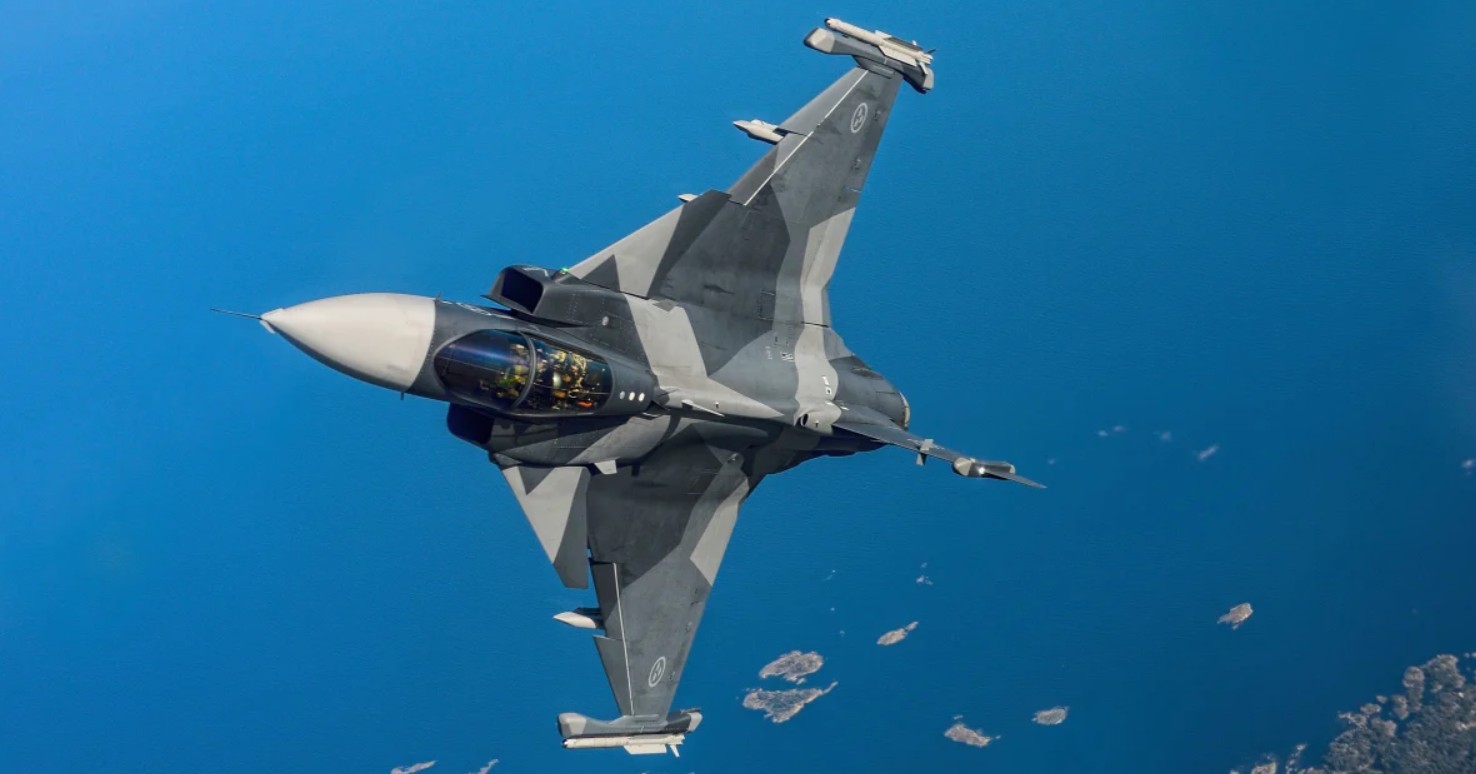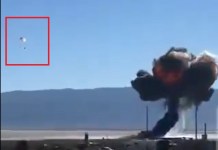The maker of JAS-39 Gripen fighter jets, Saab, is facing an acute supplier shortage, according to a newly published annual report.
As per the report, Sweden has been facing supplier shortages due to the Ukraine war, which have caused struggles with the maintenance of military equipment and “major delivery deviations,” such as delayed delivery of the new signals intelligence ship “HSwMS Artemis.”
“Extensive measures have been taken in connection with special government decisions with financial additions…as well as in connection with the allocation of funds for the re-acquisition [replacement] of equipment covered by the aid to Ukraine….however, the war in Ukraine and other production conditions such as component and raw material shortages play a role adversely affecting material [supply] and production,” the document, published on February 22, stated.
Apart from that, the shortage of pilots resulted in the Swedish Air Force recording 1,363 fewer flight hours in 2022 for its Gripen force, against 11,727 hours covered in 2021, a downfall of nearly 12 percent.
The report specifically identifies the shortage of combat leaders, flight technicians, and pilots as the sources of the problem, together with 30 fighter pilots taking study leave.
The decline in flight hours of the Gripen, which is the mainstay of the Swedish Air Force, raises serious questions about the Swedish air power amid the ongoing Russian aggression in Ukraine, which, as the report suggests, “constitutes a breaking point for Swedish and European security and rules-based security.”
“In 2022, the furloughs did not affect the execution of main tasks to any significant extent. However, the air force’s ability to continue to train and maintain combat units has declined significantly,” the report said.
The report further stated that “if the leave of absence continues over time, the ability of the military units will also decline, primarily about the ability to solve main tasks but also about endurance.”
The report also mentions some promising prospects, such as the continued supply of Gripen replacement units and spare parts, review of agreements with suppliers, and construction of a new workshop on the F-17 Air Force Wing are all said to be supporting “planned needs” out to 2025.

Saab was awarded a contract in December 2022 to upgrade the Swedish Air Force’s Gripen C/D fleet to continue in service until 2035.
The upgrades will involve the introduction of a new version of the engine to enhance flight performance, a more effective electronic warfare system, and an upgrade to the fighter’s radar, which will feature extended detection and tracking range, among other things.
Besides, Stockholm has also agreed to purchase 60 of the more advanced Gripen E jets.
Concerns Related To Other Assets & Military Exports
In addition to Gripen fighter jets, the Swedish armed forces annual report also highlights concerns about the lower availability of other air and ground combat assets.
For instance, lower availability of Transportflyg Tp 84 (C-130 Hercules transport aircraft) in 2022 due to the aircraft remaining with Lockheed Martin “longer than planned,” and lower availability of the Helikopter 15 (HKP 15) – the military variant of the Agusta A109 – because of the lack of technical personnel added to problems.
Likewise, the Swedish Army tanks and combat vehicles suffered lower availability rates because of several ongoing renovations and repairs.
The war in Ukraine also caused a decrease in the scope of efforts to secure export contracts for Swedish-designed military equipment. However, support from Swedish armed forces was provided for certain export campaigns.
“During the first quarter [of 2022], the Swedish Armed Forces completed export support to BAE Bofors regarding Archer [155mm self-propelled howitzer] within the framework of testing and evaluation in the USA,” the report stated.
“The head of the [Swedish] army, the head of the navy, and the head of the air force have participated in numerous trips, visits, and video conferences linked to export support in 2022,” according to the report.
String Of Failures For Gripen Export Campaigns
Export support was also provided to Gripen campaigns, which took a loss in July when the Czech Republic opted to buy 24 F-35 fighter jets, turning down the Gripen E offered by Sweden, even though the Czech military already operates 14 Gripen C/D jets acquired from Sweden on a lease that is due to end in 2027.
Although Saab’s pitch was more cost-effective, Czech politicians and military leaders were already leaning towards the American stealth fighter jet.
Before the Czech Republic, Finland and Canada chose the F-35 over Saab Gripen E to replace their existing fleets of aging F/A-18 and CF-18 (Canadian variant of the F/A-18) fighter jets.

The Gripen E/F fighter jets have not seen success since the last contract they secured with the Brazilian Air Force in 2014 after the tough competition that included the Dassault Rafale, Boeing’s F/A-18 Super Hornet, and the Eurofighter Typhoon.
Gripen won the Brazilian contract because of the country’s long-established practice of acquiring aircraft with low operational and lifetime costs. Saab had offered the Gripen at almost half the price of either Dassault’s Rafale or Boeing’s F/A-18.
Moreover, Saab had reportedly offered a more significant level of technology transfer for the fighter than Dassault and Boeing, an even more critical factor that helped it clinch the deal.
Brazil had insisted on technology transfers so that the planes could be assembled locally and give a boost to the domestic defense industry. Therefore, a decisive factor in awarding the contract is how much of the fighters’ technology the bidder is able and willing to share and how much of it will be built within its borders.
All Is Not Lost For Gripen
Saab remains hopeful of export prospects for its Gripen. Recent reports indicate that the Philippines may be interested in purchasing the Gripen fighter jets for their respective air forces, as indicated by recent reports.
In November last year, the Swedish government approved the transfer of the JAS 39 Gripen to the Philippines. Saab has long been interested in selling its fighter jets to Manila and has had a sales office there since 2016.
However, until recently, Stockholm was known to have perceived arms trade with the Philippines as problematic because of reports of human rights violations in the Southeast Asian country under the last President, Rodrigo Duterte.
Now that Duterte is no longer in power, Sweden believes the situation will improve in the Philippines. This is said to have led the Export Control Board (EKR) of the Swedish Arms Export Authority (ISP) to approve the transfer of the Gripen unanimously.
Besides that, Saab remains hopeful of securing a deal with the Indian Air Force under the MMRCA 2.0 program, which seeks to purchase 114 fighter jets.
While the Swedish jet is capable, it is not a frontrunner in the competition. The Gripen fighter jets also participated in the MMRCA (Medium Multi-Role Combat Aircraft) deal when the Indian Air Force initially sought 126 fighters. However, the service finally chose 36 French Rafale jets in flyway condition.

However, Saab continues to aggressively promote the Gripen for the MMRCA 2.0 by actively lobbying and making lucrative proposals, just like it did with Brazil. For example, in November 2021, the Swedish manufacturer announced that the Gripen single-engine fighter is available for half the price India had paid for the Rafale.
Notably, Saab announced in January that it was ending its partnership with India’s Adani Group to produce the Gripen E fighters in India.
The Swedish Corporation had agreed with the Gautam Aadani-led Adani Group in 2017 to position itself better in the contest for Indian Air Force’s contract for fighter jets.
The partnership agreement between the companies would have been implemented if the Indian Air Force selected the Gripen E fighter jet. However, Saab has now decided to abandon that partnership.
“We have decided not to pursue the arrangement with the Adanis,” stated Mats Palmberg, chairman and managing director of Saab India, during a media interaction in New Delhi on January 16.
While Palmberg did not disclose the reasons for the dissolution of the agreement with the Adani Group, he provided some information about the company’s plans in India. Saab has not announced any other partners. However, Palmberg said the company would prefer to produce the fighters in a partnership arrangement where Saab held 74 percent.
Apart from Saab Gripen, Boeing’s F/A-18E/F Super Hornet, Lockheed Martin’s F-21, Dassault’s Rafale, the Eurofighter Typhoon, and the Russian MiG-35 and Su-35 fighters are also participating in the competition.
- Contact the author at tanmaykadam700@gmail.com
- Follow EurAsian Times on Google News




